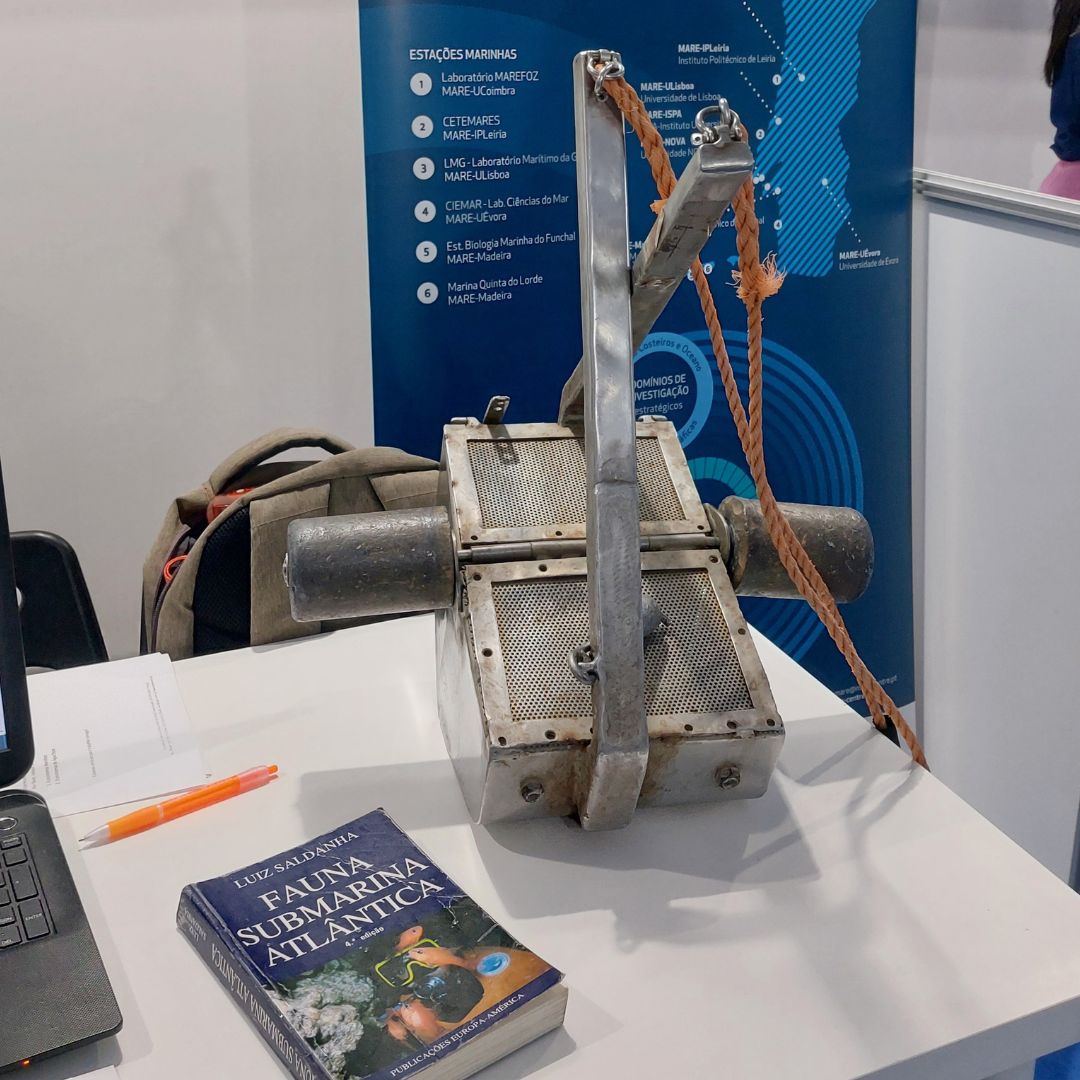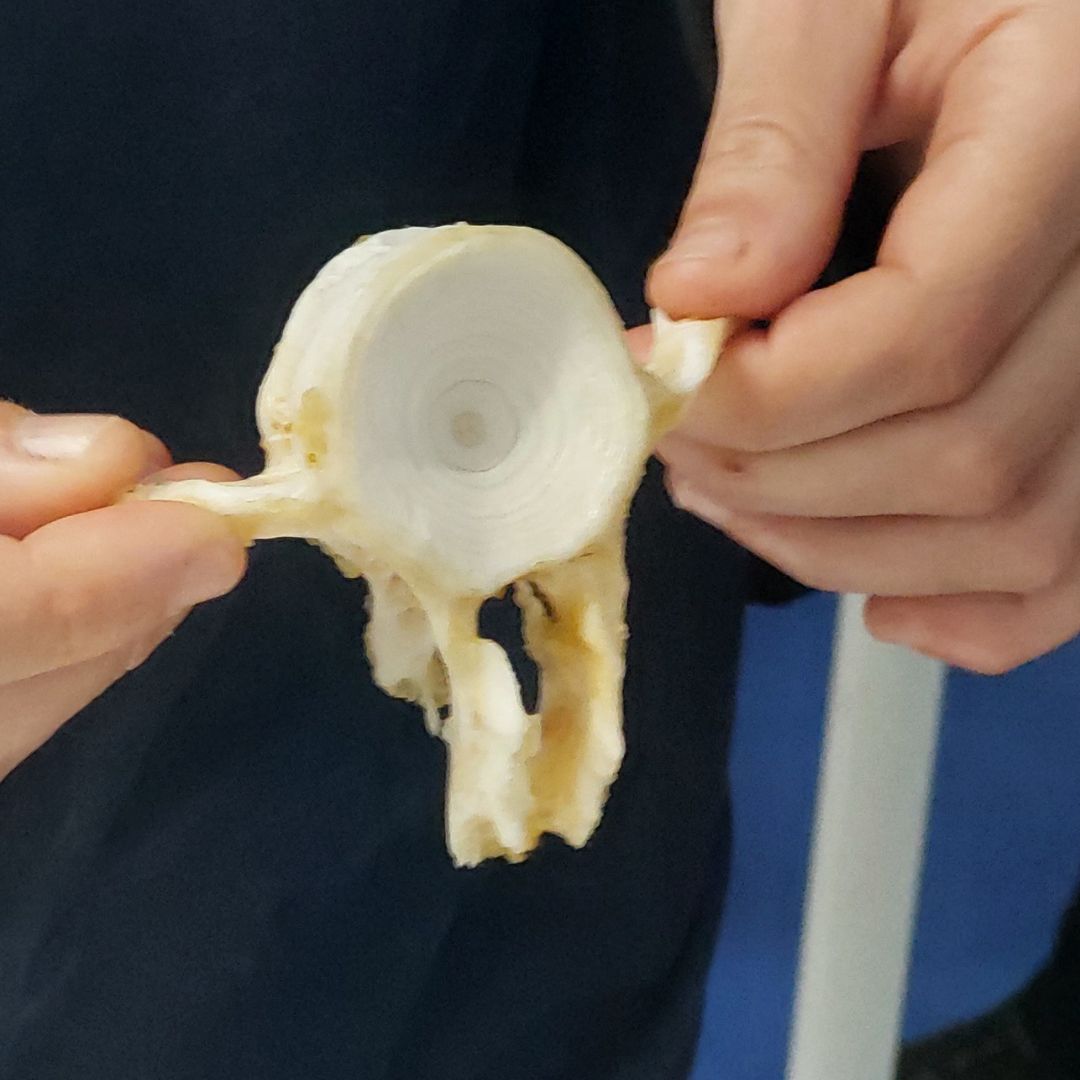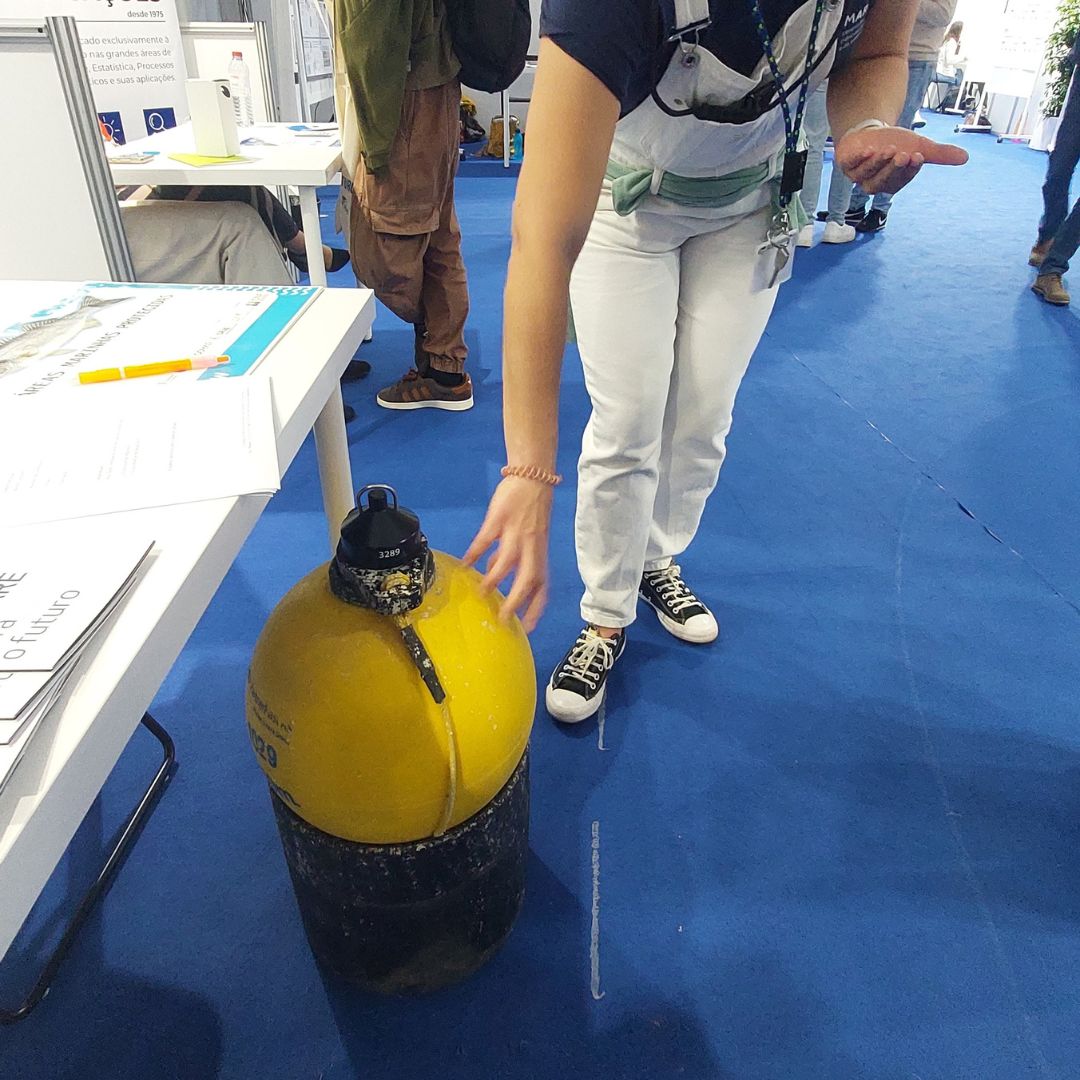MARE at the “Jobshop Sciences 2025” job fair
Jobshop Ciências 2025, the annual job fair of the Faculty of Sciences of the University of Lisbon, took place on April 8 and 9. This is a privileged forum for bringing science students and graduates closer to the job market.
As an R&D unit of FCUL, MARE was present on the second day of the event, welcoming dozens of students from various degrees to its space, who wanted to find out more about the research center, the work carried out at the unit and the existing opportunities for volunteering, internships, theses and work.
Waiting for them were researchers Sofia Nogueira, Christos Gkenas, Inês Pires and Filipa Silva, who answered any questions and shared some of their work as researchers. Visitors had the opportunity to learn more about what has been done in the field of exotic species in rivers, benthic ecology of the Tagus estuary, fish ecology and marine conservation. They brought along an object used in their work to serve as a motto for the interaction.
Come and meet them too!

The dredger
Inês Pires, a master's student and researcher at MARE | ARNET, is working on monitoring benthos in the Tagus and Sado estuaries and, soon, in Óbidos Lagoon. The project aims to analyze changes in benthic communities over the years, based on samples collected with a dredge and hook. After identifying, weighing and measuring the organisms, it is possible to assess the evolution of biodiversity and environmental impacts.
Part of her work includes studying the introduction of invasive species, such as the Japanese clam, which has spread throughout the estuaries. According to Inês, “Over the years, the presence of this species has increased considerably, negatively affecting the populations of native species”. The researcher stresses the importance of continuous monitoring to assess ecological quality and understand the evolution of marine biodiversity.
During Jobshop Sciences 2025, Inês demonstrated the use of a dredge to collect samples from the estuarine bottom, allowing small organisms that live in the sediment to be captured and analyzed later. Regular sampling contributes to the creation of an essential database for environmental impact assessment and sustainable management of marine ecosystems.
The eDNA filtration pump
Sofia Nogueira is a researcher at MARE | ARNET, where she applies molecular tools to study invasive species in Portuguese rivers. Her work focuses on environmental DNA (eDNA), genetic material left by organisms in the environment, which allows for much more sensitive detection than traditional methods.
This approach is crucial for the early identification of invasive species and for locating remaining populations of endangered species. Sofia has participated in projects such as the one that identified new areas of invasion of the European barramundi in central Portugal and the one that found populations of the saramugo, a critically endangered species, in the Guadiana basin. She has also contributed to studies using DNA metabarcoding to analyze the diet of invasive species, such as the Mozambique tilapia (in São Tomé) and the European catfish (in the Tagus).
At Jobshop Ciências 2025, Sofia presented the eDNA filtration pump, a portable device that allows DNA to be collected directly from river water, filtering more than 2 liters per minute. “eDNA is revolutionizing the way we monitor aquatic ecosystems - we can detect species that we missed before, which is essential for effective biodiversity management,” Sofia explained.
European catfish vertebrae  Christos Gkenas is a researcher at MARE | ARNET, with a specialization in aquatic ecology and a particular interest in the ecological consequences of biological invasions. He uses innovative methodologies, such as stable isotope analysis, to study the impact of invasive species on freshwater ecosystems, especially with regard to food chains and ecological structure.
Christos Gkenas is a researcher at MARE | ARNET, with a specialization in aquatic ecology and a particular interest in the ecological consequences of biological invasions. He uses innovative methodologies, such as stable isotope analysis, to study the impact of invasive species on freshwater ecosystems, especially with regard to food chains and ecological structure.
At Jobshop Ciências 2025, he presented projects underway in his laboratory, such as LIFE-PREDATOR, funded by the European Union, which aims to mitigate the impacts of the European catfish (Silurus glanis) through early detection systems, ecological management and awareness-raising actions.
During the event, he brought European catfish vertebrae of various sizes, challenging visitors to guess the length of the fish. The largest was a specimen measuring around 2 meters. “This research helps us better understand the impact of invasive species and find effective ways to manage and conserve freshwater ecosystems,” said Christos.

The acoustic transmitter and the buoy with receiver
Filipa Silva, a PhD student and researcher at MARE | ARNET, studies the impact of marine protected areas (MPAs) on biodiversity and local communities.
In the Southwest Alentejo and Vicentine Coast Natural Park, Filipa joins fishermen to carry out experimental fisheries inside and outside the protected areas, comparing the abundance and diversity of species. With the help of acoustic telemetry technology, the researcher monitors the movements of the fish in real time. At Jobshop, she showed two key objects from her research: an acoustic transmitter, which is implanted in the fish, and a buoy with a receiver, which picks up the signals and makes it possible to map the space in which the animals move.
This work makes it possible to assess whether the MPAs are well designed - whether they are the right size and location to protect the species - and to understand how the fish actually use the marine space. For Filipa, the involvement of fishermen is essential: “It's very important that we collaborate and are in constant communication with fishermen. This is the only way to gain acceptance and understanding of the management measures that will be adopted.
Text by Vera Sequeira
